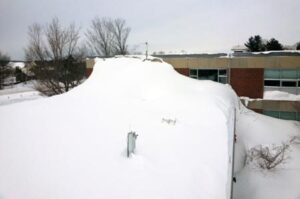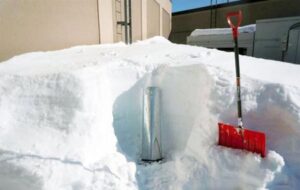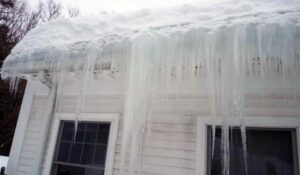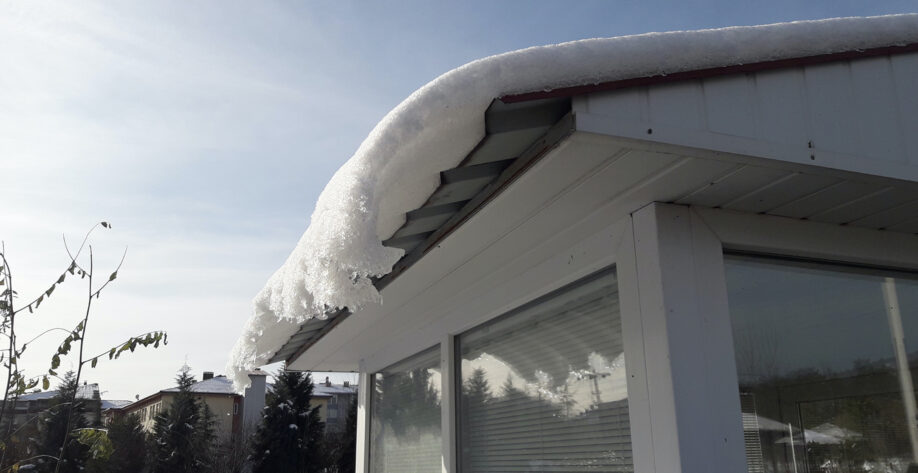New England winters, as evidenced by 2010/2011 and 2015, can deposit large amounts of snow on roof areas and potentially overload the roof structural system. Snow tends to accumulate against rising walls and parapets, rooftop units and roof wells, and can cause large concentrated loads on roof areas. Original building structural drawings often express the snow load that the roof was designed for in pounds per square foot (psf). This doesn’t directly correlate to a depth of snow. The allowable depth of snow depends both on the design load psf and the unit weight of the snow in pounds per cubic foot (pcf). The Massachusetts State Building Code (MSBC) and associated references provide an equation for the unit weight of snow based on the design ground snow load; however, the actual conditions may vary depending on the weather.
We suggest the following procedure for measuring roof snow loads:
1. Measure the depth of snow at various locations around the roof area. Pay particular attention to accumulated snow against rising walls or mechanical units where snow tends to drift. We recommend using a plastic shovel to dig down to the roof system to avoid damage.

2. Using a known volume such as a stove pipe of known diameter and height, obtain a sample of snow in its existing condition. A stove pipe can be used to slide through the snow and then cap the bottom of the pipe to collect the snow.
3. Measure the weight of the sample snow (remember to subtract the weight of the stove pipe or similar apparatus).

4. The unit weight of the snow will be determined by dividing the weight of the snow by the known volume. We suggest performing the measurements at multiple locations on the roof, including where the snow appears to be consistent depth and at drifted snow locations as the unit weight may vary.

5. Once the unit weight is obtained, divide the allowable uniform load (obtained from the original drawings) by the unit weight to provide an allowable snow depth. For example, if the design or allowable snow load is 30 psf and the unit weight of snow is 20 pcf, the allowable snow depth will be 30/20 = 1’ 6” of snow.
6. While performing the measurements, be aware of any ice, slush or water below the snow since these are generally heavier than the snow. These layers should be weighed separately and added to the snow load.

Tagged In:
Building Enclosure Design & Consulting
